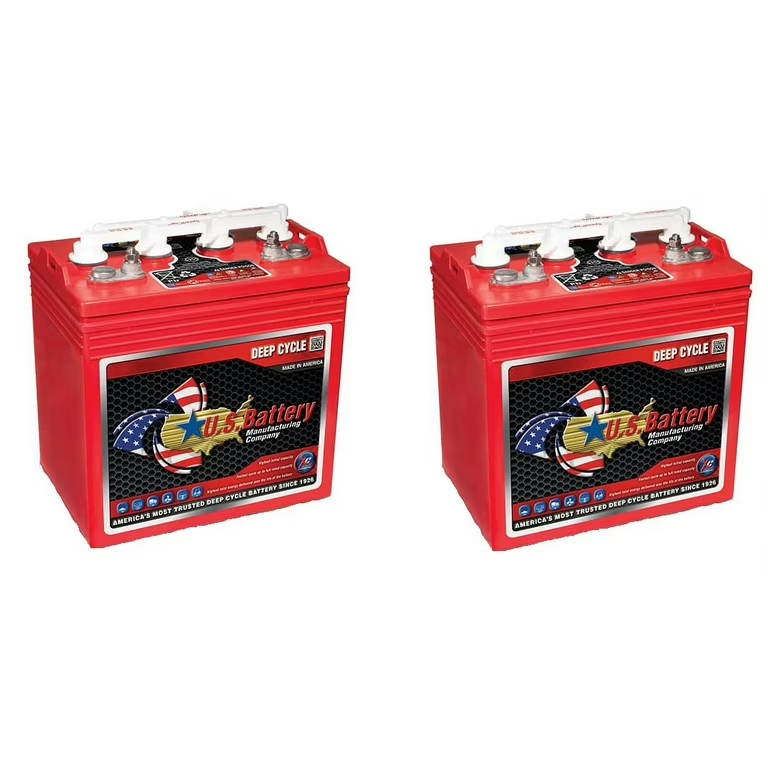In the realm of energy storage, voltage plays a crucial role in determining the performance and efficiency of batteries. While most consumer electronics and devices have traditionally relied on 3.7-volt or 4.2-volt batteries, there’s a growing interest in exploring higher voltage options. Among these, the 8-volt battery stands out as a promising candidate, offering several advantages over its lower-voltage counterparts.
The Benefits of Higher Voltage
- Increased Power Output: One of the most significant benefits of higher voltage batteries is their ability to deliver more power. Power is calculated as voltage multiplied by current. Therefore, a higher voltage battery can provide the same amount of power with a lower current, reducing the need for thicker wires and connectors, which can be both expensive and bulky.
- Improved Efficiency: Higher voltage batteries can also be more efficient. As the voltage increases, the internal resistance of the battery typically decreases. This means that less energy is lost as heat during charging and discharging, leading to a higher overall efficiency.
- Smaller Battery Packs: For applications where size and weight are critical, higher voltage batteries can offer a significant advantage. By operating at a higher voltage, it’s possible to achieve the same energy capacity with a smaller battery pack. This can be particularly beneficial for devices such as drones, smartphones, and electric vehicles.
- Enhanced Charging Speed: Higher voltage batteries can often be charged more quickly than lower voltage batteries. This is because the charging current can be higher without exceeding the maximum safe current for the battery. Faster charging times can be a major convenience for users and can help to reduce the range anxiety associated with electric vehicles.

Challenges and Considerations
While the benefits of 8-volt batteries are clear, there are also some challenges and considerations to be addressed.
- Compatibility Issues: One of the main challenges is ensuring compatibility with existing devices and infrastructure. Most electronic components are designed to operate at specific voltage levels. Transitioning to 8-volt batteries may require modifications to existing circuits or the development of new components.
- Safety Concerns: Higher voltage batteries can pose greater safety risks if not handled properly. It’s essential to implement appropriate safety measures, such as protective circuitry and proper handling procedures, to minimize the risk of accidents.
- Cost: The initial cost of 8-volt batteries may be higher than that of lower voltage batteries. However, as production volumes increase and manufacturing processes improve, the cost is expected to decrease over time.

Potential advancements in materials and design
The future of 8-volt batteries hinges on continued advancements in materials and design. Here are some promising areas of research and development:
Materials
- Solid-State Electrolytes: Beyond traditional ceramic and polymer-based electrolytes, researchers are exploring novel materials like organic-inorganic hybrid electrolytes and quasi-solid electrolytes. These materials offer potential advantages such as improved safety, faster ion transport, and higher energy density.
- High-Capacity Cathodes: Materials like lithium-rich layered oxides, high-nickel cathodes, and sulfide-based cathodes are being investigated for their potential to deliver higher energy densities while maintaining good cycle life and rate capability.
- Anodes Beyond Graphite: In addition to silicon-based anodes, researchers are exploring other promising anode materials like lithium-metal alloys and lithium-sulfur composites. These materials offer the potential for even higher energy densities but require careful consideration of challenges like dendrite formation and electrolyte compatibility.
Design
- 3D Battery Structures: 3D battery architectures, such as porous or hierarchical structures, can improve ion and electron transport, leading to faster charging and discharging rates.
- Flexible and Wearable Batteries: Advances in materials and manufacturing techniques are making it possible to develop flexible and wearable batteries that can conform to various shapes and integrate seamlessly into devices.
- Multi-Cell Battery Packs: By combining multiple battery cells in innovative configurations, it’s possible to achieve higher voltage levels, improved safety, and better performance.
- Battery Recycling and Reuse: Developing efficient and sustainable battery recycling processes is crucial for reducing environmental impact and ensuring a reliable supply of battery materials.
Synergies with Other Technologies
- Integration with Renewable Energy: 8-volt batteries can be paired with renewable energy sources like solar and wind power to create more sustainable and resilient energy systems.
- Wireless Charging: Advancements in wireless charging technology can make it easier to charge 8-volt batteries without the need for physical connections.
- Internet of Things (IoT): 8-volt batteries can power a wide range of IoT devices, enabling new applications and services.
By pursuing these research directions, scientists and engineers are working to overcome the challenges and limitations of current 8-volt battery technologies and unlock their full potential. These advancements could pave the way for even more powerful, efficient, and sustainable energy storage solutions in the future.
Applications for 8-Volt Batteries
Despite the challenges, 8-volt batteries have the potential to be used in a wide range of applications.
- Electric Vehicles: Electric vehicles (EVs) are one of the most promising areas for the adoption of 8-volt batteries. Higher voltage systems can improve the efficiency and range of EVs, making them more attractive to consumers.
- Consumer Electronics: 8-volt batteries could also be used in consumer electronics such as smartphones, laptops, and cameras. While these devices currently use lower voltage batteries, the benefits of higher voltage in terms of power output and efficiency could make it a compelling option.
- Energy Storage Systems: 8-volt batteries could be used in energy storage systems for both residential and commercial applications. These systems can help to reduce reliance on fossil fuels and improve grid stability.
Impact of new technology on the performance and longevity of 8 volt batteries
The performance and longevity of 8-volt batteries have been significantly influenced by advancements in technology. Here’s a breakdown of some key innovations:
Battery Chemistry Advancements
- Silicon-based Anodes: Silicon offers a higher theoretical capacity than traditional graphite anodes. However, it suffers from volume expansion during cycling, which can lead to structural degradation. Researchers are developing techniques to address this issue, such as using silicon-carbon composites or silicon nanostructures.
- Solid-State Electrolytes: Traditional liquid electrolytes can be prone to leakage and safety concerns. Solid-state electrolytes, such as ceramic or polymer-based materials, offer potential advantages like improved safety and higher energy density.
- Lithium-Metal Batteries: Lithium-metal anodes can significantly increase energy density but face challenges like dendrite formation, which can lead to short circuits. Researchers are exploring strategies to mitigate these issues, such as using protective layers or electrolyte additives.
Manufacturing Techniques
- Advanced Electrode Manufacturing: Techniques like slurry coating, doctor blading, and 3D printing are being refined to improve electrode uniformity, reduce defects, and enhance battery performance.
- Laser Welding: Laser welding offers precise and efficient sealing of battery cells, reducing the risk of internal short circuits and improving safety.
- Battery Management Systems (BMS): Sophisticated BMS algorithms can optimize charging and discharging cycles, improve battery life, and enhance overall performance.
Thermal Management
- Graphene-Based Cooling: Graphene’s high thermal conductivity can be exploited to improve heat dissipation, preventing overheating and extending battery life.
- Phase Change Materials (PCMs): PCMs can absorb and release heat, helping to maintain a stable operating temperature for the battery.
Safety Features
- Flame Retardant Materials: Using flame-retardant materials in battery components can help prevent fires in the event of a short circuit or thermal runaway.
- Pressure Relief Valves: These valves can safely release internal pressure if the battery becomes overheated, reducing the risk of explosions.

Implications for 8-Volt Batteries
These advancements are not only improving the performance of 8-volt batteries but also making them more suitable for a wider range of applications. Some specific implications include:
- Increased Energy Density: Higher energy density 8-volt batteries can enable longer operating times for devices like electric vehicles and drones.
- Improved Safety: Advanced safety features can reduce the risk of battery-related accidents, making 8-volt batteries more reliable and trustworthy.
- Enhanced Charging Speed: Faster charging times can be achieved through improved battery chemistry and advanced charging techniques.
- Lower Cost: As manufacturing techniques become more efficient and materials become more affordable, the cost of 8-volt batteries is expected to decrease.
In conclusion, the ongoing development of new technologies is driving significant advancements in the performance and longevity of 8-volt batteries. These improvements are opening up new possibilities for the application of 8-volt batteries in various industries. From consumer electronics to transportation.
The 8-volt battery represents a promising technology with the potential to revolutionize the energy storage industry. While there are challenges to be overcome, the benefits in terms of power output, efficiency, size. And charging speed make it a compelling option for a wide range of applications. As research and development continue, we can expect to see 8-volt batteries becoming increasingly prevalent in our daily lives.


